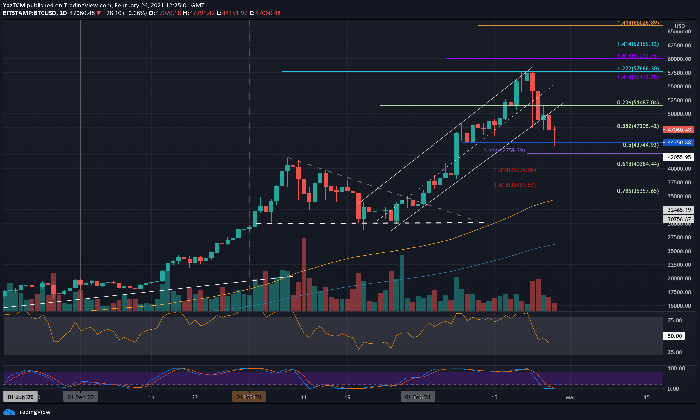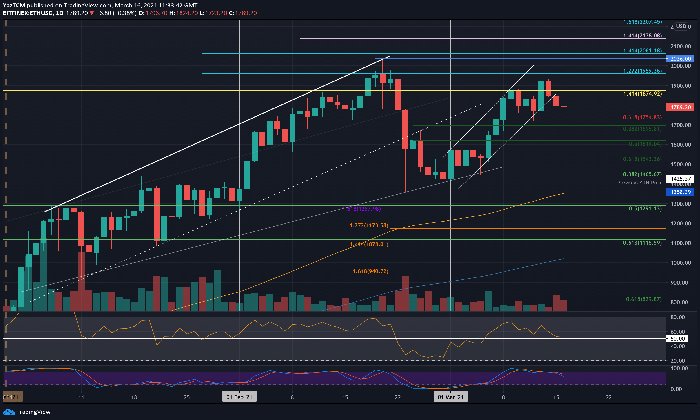Exit liquidity traps are a significant concern within the crypto market, where unsuspecting investors risk their funds by providing liquidity for more informed insiders looking to cash out. In this deceptive setup, new investors often fall victim to market manipulation, unknowingly facilitating profitable transactions for seasoned traders while being left with devalued assets. Factors like fear of missing out (FOMO) can exacerbate this issue, driving impulsive trading decisions that lead to regrettable losses. It’s crucial for traders to be aware of the signs of these traps, which often manifest through exaggerated claims and sudden price spikes. Through vigilant detection of liquidity traps and avoidance of pump and dump schemes, crypto enthusiasts can protect their investments from becoming mere exit liquidity for others’ profits.
In the volatile world of cryptocurrency trading, the concept of exit liquidity often surfaces when we discuss the vulnerabilities faced by new investors. Tightly connected to issues such as market manipulation, this dilemma arises when fresh participants in the market end up propping up prices for experienced traders ready to leave the game. Known by various terms, including liquidity sinkholes or cash-out schemes, these scenarios can lead to significant financial losses for entry-level traders, especially when compounded by the rush induced by FOMO and social media hype. Understanding how to recognize these traps is paramount for anyone eager to navigate the crypto landscape without falling victim to the pitfalls of speculative trading. By enhancing their awareness of crypto investment risks, investors can adopt strategies that allow them to sidestep the traps set by misinformation and opportunistic market actors.
Understanding Exit Liquidity Traps
Exit liquidity traps are a phenomenon where newly invested capital unwittingly provides liquidity for existing holders of a cryptocurrency to cash out. These traps occur when new investors, excited by the potential of a token, enter positions without due diligence, often due to hype or FOMO (fear of missing out). As insiders or early adopters sell their holdings at inflated prices, these unsuspecting new entrants are left holding assets that quickly depreciate when the price corrects.
Understanding the dynamics behind exit liquidity is essential for anyone looking to invest in cryptocurrencies. In traditional finance, liquidity primarily benefits those closest to the market’s action; however, in the crypto sphere, new investors can inadvertently become pawns in a game riddled with manipulation. This makes it vital to conduct comprehensive research before committing funds to any cryptocurrency, as identifying potential red flags early can save investors from significant losses.
Detecting Liquidity Traps in Crypto Trading
Detecting liquidity traps requires diligence and sharp analytical skills. One vital method is to analyze the trading volume relative to the market cap of a cryptocurrency. If a token has high trading volume but low market capitalization, it could indicate that a few individuals control the asset, increasing the risk for new investors. Additionally, monitoring social media and crypto forums can unveil cryptocurrency hype that might not be backed by solid fundamentals. Examining project documentation and development activity is also crucial to ascertain if the team is legitimate and actively working on the project’s goals.
Another critical element in detecting liquidity traps is observing the behavior of market participants. Watch for sudden price spikes that seem disproportionate to news or developments associated with the asset. Organized promotional efforts can often signal a pump-and-dump scheme where early investors are incentivizing more significant investment without transparent underlying value. Being proactive about trade analysis and staying informed about ongoing market trends can significantly mitigate the risk of getting caught in liquidity traps.
The Impact of FOMO in Trading
FOMO, or fear of missing out, serves as a principal catalyst for impulsive trading decisions in the crypto world. It leads traders to make hasty investments based on emotions rather than factual analysis, often resulting in them falling into exit liquidity traps. This psychological factor is particularly dangerous in a volatile market where prices can fluctuate dramatically within short periods. It is essential for investors to recognize this emotion and develop a more rational approach to trading that avoids boarding the hype train without adequate research.
Moreover, FOMO can be exacerbated by social media influencers and peer pressures, which amplify the urgency to invest as prices soar. New traders, overwhelmed by the success stories of others, often ignore sound investment strategies in pursuit of quick profits. This cycle eventually leads to intelligent traders capitalizing on the impatience and excitement of novices, leaving them vulnerable to losses. To combat FOMO effectively, maintaining a disciplined trading strategy and strict adherence to personal risk management principles is crucial.
Understanding Market Manipulation Techniques
Market manipulation techniques like pump-and-dump schemes can significantly undermine the integrity of the cryptocurrency market. In these schemes, a group of traders purposely enhances the price of a cryptocurrency through aggressive buying and promotional tactics. This manipulation leads new investors to believe they are entering a strong investment, only for the original manipulators to sell off their holdings at the inflated price, leaving new investors with devalued assets. Recognizing these practices is crucial for safeguarding your investments.
Another aspect of market manipulation includes the use of wash trading and spoofing. Wash trading involves buying and selling an asset without any actual transfer of ownership to inflate trading volumes, creating an illusion of high demand. Spoofing, on the other hand, entails placing large orders to create an illusion of market interest, only to cancel them before execution. These tactics mislead investors into making ill-fated decisions. Being aware of these strategies can help investors protect themselves from becoming reluctant participants in manipulated markets.
Avoiding Pump-and-Dump Schemes
Pump-and-dump schemes remain a prevalent risk in the cryptocurrency landscape. These schemes typically begin with a coordinated effort to promote a cryptocurrency, often accompanied by bold claims about its potential. New investors, eager to get in on what appears to be a profitable opportunity, often buy into the asset without realizing it has been artificially inflated in price. When early investors dump their holdings for a profit, the price plunges, leaving newcomers with significant losses.
To avoid falling victim to a pump-and-dump scheme, it is critical to conduct thorough research before investing. Look for established coins with proven fundamentals rather than new, hyped projects that lack credible information. Additionally, being wary of social media hype and the aggressive marketing tactics often employed by those behind these schemes can shield your investments from disastrous outcomes. It’s essential to critically evaluate any investment opportunity before laying down capital.
When to Exit a Bad Investment
Knowing when to exit a bad investment can be one of the most critical skills for any crypto investor. This skill goes hand-in-hand with spot analysis, where it’s vital to distinguish failing projects from those with temporary setbacks. By setting stop-loss thresholds and predefined exit strategies, investors can limit their losses and avoid being trapped by their emotional biases.
Moreover, staying informed about regulatory changes and market trends can provide clues on when to pull out. If a cryptocurrency faces significant legal hurdles or negative market sentiment, these can serve as warning signs to reconsider your position. Regularly reassessing your investments and adapting to new information is key to maintaining a healthy portfolio, reducing the risk of becoming an exit liquidity victim.
Essential Tips for Safeguarding Your Investments
Safeguarding investments in cryptocurrency necessitates a proactive approach. Begin by diversifying your portfolio across multiple assets to mitigate risk. Investing only what you can afford to lose is a fundamental principle among seasoned traders. Diversification may include allocations in established coins and a careful evaluation of emerging projects that show real potential.
Moreover, choosing reputable exchanges for trading can significantly reduce the risks associated with illiquid assets. Reputable exchanges provide transparency, reliability, and access to better liquidity. Additionally, continuously educating oneself about market mechanics and evolving regulations is essential for adapting strategies that protect your investments from market pitfalls.
Fundamental and Behavioral Analysis in Crypto Investments
Conducting thorough fundamental analysis is fundamental to identifying sound cryptocurrency investments. This involves examining various factors such as the utility of the cryptocurrency, the strength of its development team, transaction volumes, and community engagement. By focusing on projects with solid fundamentals, you can lower the risk associated with exit liquidity traps significantly.
Additionally, understanding behavioral finance can be immensely beneficial for crypto investors. Recognizing how emotions and cognitive biases influence trading behavior empowers investors to develop a more rational approach when making trades. Strategies aimed at delaying gratification and resisting impulsive reactions to market fluctuations can lead to more measured, informed investment decisions.
Continuous Learning and Staying Informed
The cryptocurrency landscape is ever-evolving, making continuous learning vital for investors. By staying informed about market trends, regulatory changes, and technological advancements, investors can better adjust their strategies to fit the current market climate. Regularly following news, engaging with communities, and participating in educational forums can enhance one’s knowledge and awareness of potential pitfalls, including exit liquidity traps.
Moreover, understanding past market cycles can provide insights into future trends, helping to predict possible exit liquidity opportunities. Continuous education through courses, webinars, and market analysis can be advantageous, fostering informed decision-making and enhancing the ability to avoid the common pitfalls associated with crypto investments.
Frequently Asked Questions
What are the major risks associated with exit liquidity traps in crypto investments?
Exit liquidity traps pose significant risks for crypto investors, primarily by turning them into exit liquidity for early investors. This can happen through market manipulation, where new investors unknowingly buy into overhyped assets, only to see the value plummet once insiders sell. Understanding these traps is crucial to mitigate crypto investment risks.
How can investors detect exit liquidity traps before making a purchase?
To detect exit liquidity traps, investors should analyze the fundamentals of a cryptocurrency, its development team, and overall market sentiment. Red flags include unchecked price surges, anonymous teams, and low trading volumes. Active community engagement and transparency are indicators of a project’s legitimacy, reducing the likelihood of falling into a liquidity trap.
What role does FOMO play in creating exit liquidity traps in the crypto market?
FOMO, or fear of missing out, significantly contributes to exit liquidity traps. It drives traders to make hasty purchases during market rallies or when influenced by social media hype, often without due diligence. This impulsive behavior can lead them to become exit liquidity for those ready to sell their holdings at inflated prices.
What strategies can be employed to avoid falling victim to exit liquidity traps in crypto?
To avoid exit liquidity traps, investors should focus on high-market-cap coins, conduct thorough research, and steer clear of projects fueled solely by hype. Employing reputable exchanges, engaging with active trading communities, and focusing on long-term project viability can also help safeguard investments from manipulation and unforeseen market changes.
How does market manipulation contribute to exit liquidity traps in cryptocurrency?
Market manipulation creates artificial price movements that can mislead investors into perceiving strong demand for a cryptocurrency. Techniques like wash trading and pump-and-dump schemes lure in unsuspecting buyers, turning them into exit liquidity as manipulators sell their assets at inflated prices, leading to significant losses for latecomers.
What are the common indicators that suggest a cryptocurrency may be an exit liquidity trap?
Common indicators of an exit liquidity trap include exaggerated marketing claims, low liquidity, a lack of identifiable team members, and sudden, unexplained price increases. Additionally, projects with obscure development activities or regulatory concerns should be approached with caution, as they may lead to significant investment risk.
How can behavioral finance help investors avoid exit liquidity traps?
Behavioral finance offers insights into the emotional tendencies that drive trading decisions, such as FOMO and regret. By recognizing these psychological factors, investors can better manage their impulses, make informed decisions, and avoid the pitfalls of becoming exit liquidity in speculative market scenarios.
What impact do regulatory changes have on exit liquidity traps in cryptocurrencies?
Regulatory changes can severely impact crypto markets, potentially causing drastic reductions in liquidity. If a cryptocurrency faces legal challenges or is banned, its market value may collapse, leaving investors unable to sell their holdings. Being aware of regulatory trends is essential in avoiding becoming exit liquidity due to sudden regulatory shifts.
Can participating in ICOs contribute to exit liquidity traps for investors?
Yes, participating in ICOs can expose investors to exit liquidity traps, particularly those that are poorly regulated or promoted without substantial backing. Founders may sell off tokens during the offering and leave investors holding depreciated assets, emphasizing the need for due diligence before participating in ICOs.
What steps can investors take to conduct a fundamental analysis of cryptocurrencies to avoid exit liquidity traps?
Investors should evaluate a cryptocurrency’s utility, the activity of its development team, transaction volumes, and overall community engagement. By assessing these factors, they can identify projects with solid foundations and better protect themselves against the risk of exit liquidity and potential losses.
| Key Points | |
|---|---|
| Exit Liquidity Traps Defined: Occur when new investors provide liquidity for insiders to cash out, resulting in lost value. | FOMO Impact: Fear of missing out leads to impulsive trades, increasing the likelihood of becoming exit liquidity. |
| Warning Signs: Red flags include exaggerated claims, low liquidity, anonymous teams, and sudden price increases. | Protective Strategies: Invest in high-market-cap assets, avoid hype-driven projects, and use trusted exchanges to mitigate risks. |
Summary
Exit liquidity traps present a significant risk for crypto investors, potentially leading to substantial financial losses. By understanding exit liquidity traps and recognizing the common warning signs and strategies to avoid them, traders can protect themselves from being caught up in unfavorable market dynamics. Effective analysis, awareness of the emotional factors driving trading decisions, and a focus on sound investment principles can empower investors to navigate the volatile cryptocurrency landscape more confidently.
Exit liquidity traps are precarious situations that can ensnare unsuspecting investors in the cryptocurrency market. Often caused by a combination of market manipulation and the fear of missing out (FOMO), these traps happen when new entrants unwittingly provide liquidity to sell-offs orchestrated by insiders. As these early movers cash out, latecomers find themselves holding devalued assets, leading to significant financial losses. Recognizing exit liquidity traps is crucial for anyone navigating crypto investment risks, as it can mean the difference between profit and becoming a victim of pump-and-dump schemes. In this guide, we will explore the nuances of exit liquidity, equip you with techniques for detecting liquidity traps, and reveal how to avoid falling for these detrimental pitfalls in the fluctuating crypto landscape.
In the realm of cryptocurrency trading, the term “exit liquidity” often describes a scenario in which novice investors inadvertently subsidize the profit of more established traders. This phenomenon typically occurs when late investors buy into a trending digital asset, only for market manipulators to sell their holdings at artificially inflated prices. The aftermath leaves new investors with worthless tokens, highlighting a critical aspect of navigating the crypto space. Furthermore, understanding how to detect these liquidity traps is paramount for safeguarding your investments and maintaining your financial health. By delving into the core elements that define such market dynamics, traders can better equip themselves against potential losses related to poor trading decisions and market deception.














